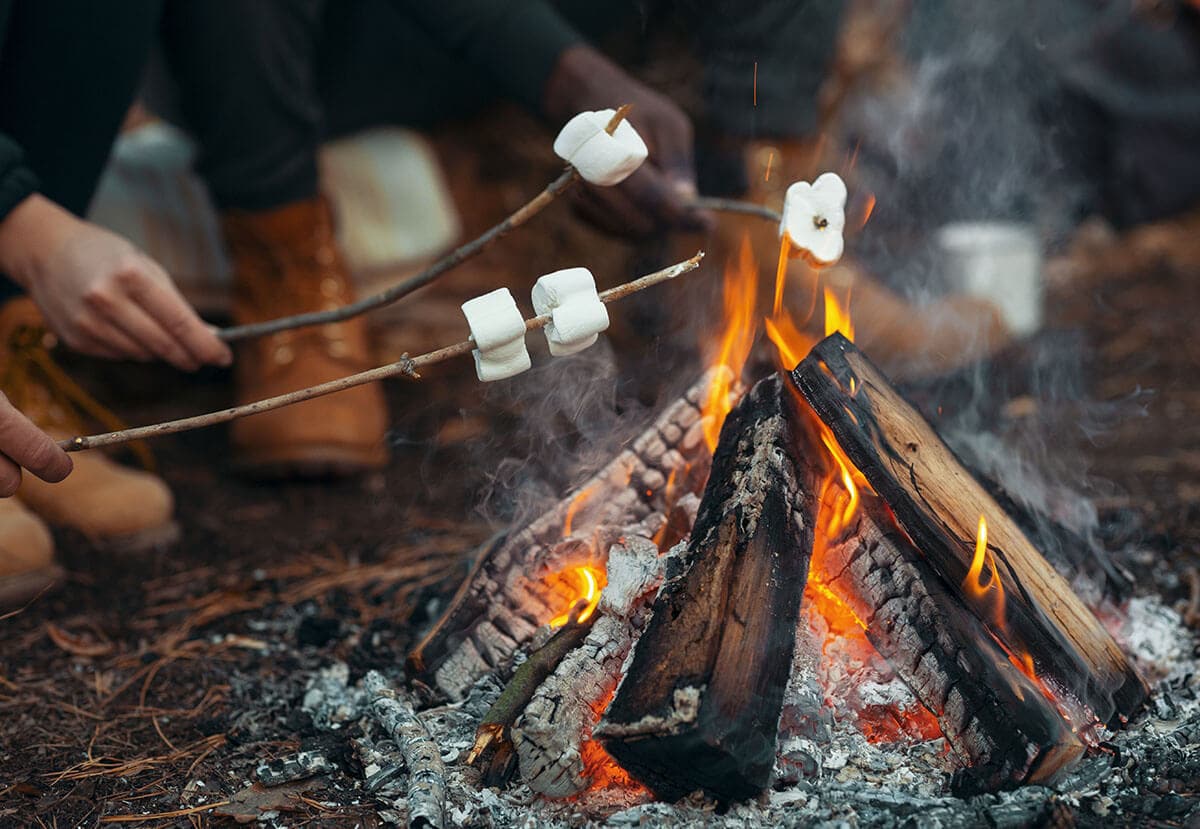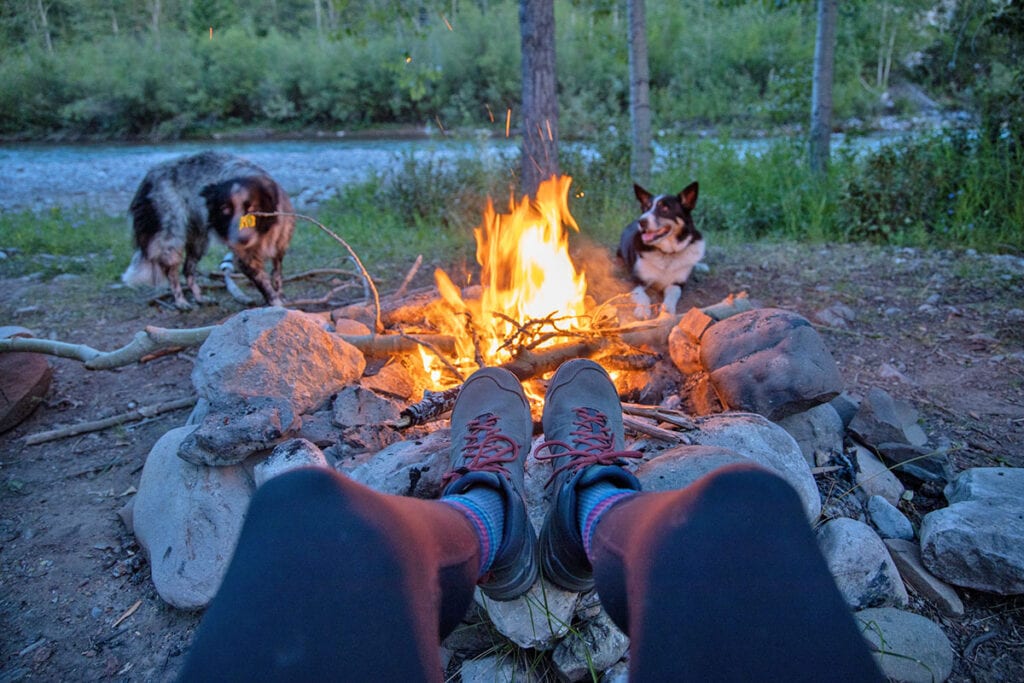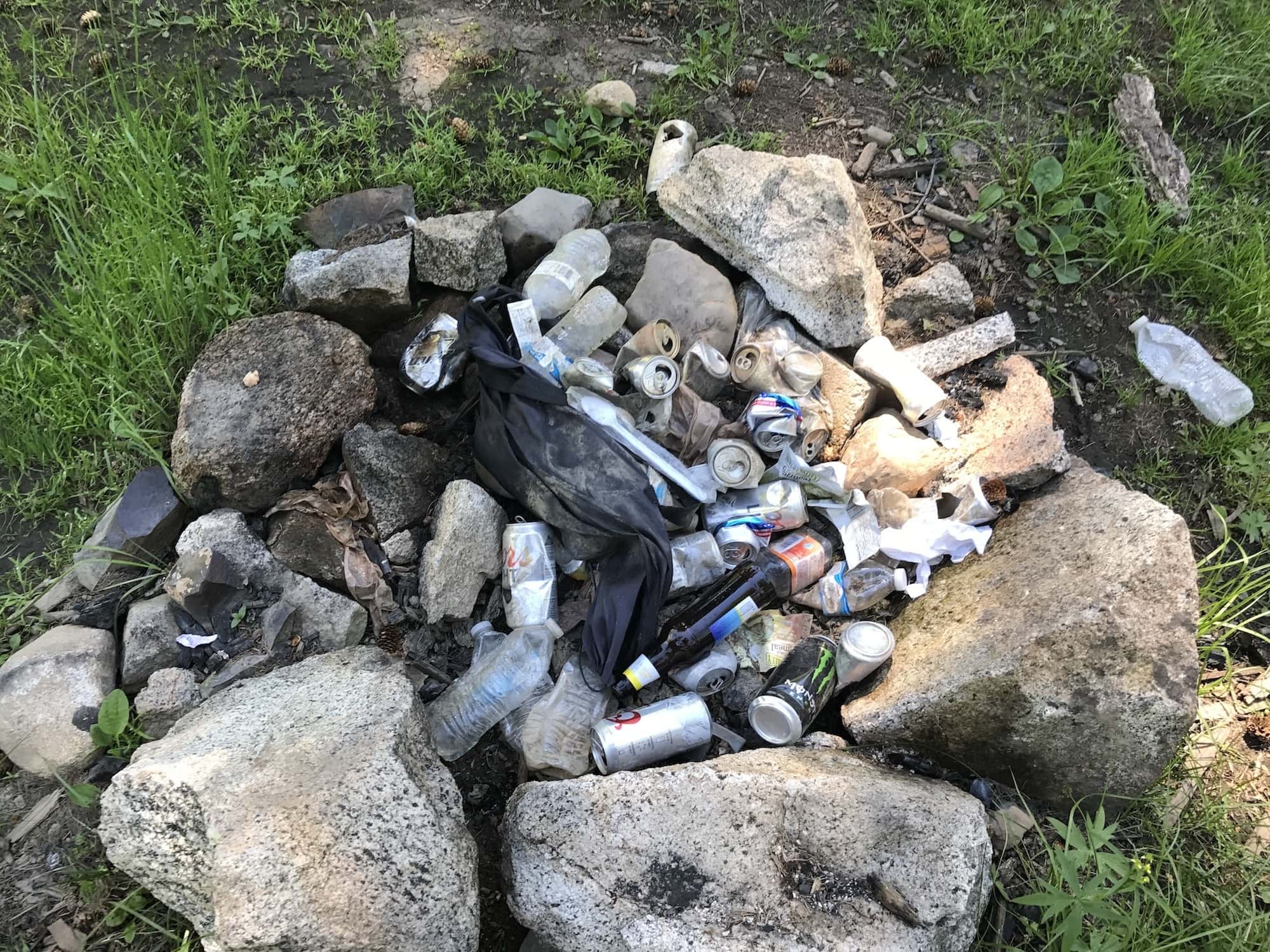How to Have a Safe Campfire & Leave No Trace
Whether you’re toasting s’mores or using a fire to stay warm, learn how to be fire smart and Leave No Trace on your camping trips

With climate change, record temps, and a drought plaguing the Western US, it’s more important than ever that you know the basics of how to be fire smart while camping and how to enjoy a safe campfire.
For most of us, some of our best camping memories have been made while huddled around a campfire on a cool night, roasting marshmallows, cooking food, and sharing stories with friends and family. It’s a ritual that brings people together — symbolizing the end of a great day spent outside and embodies the quintessential camping experience.
Sights, smells and perfectly made s’mores aside, campfires can also be a hazard. In 2020, there were 58,950 wildfires in the US that burned nearly 10.1 million acres and most of those wildfires were caused by human activity including campfires. Those are some big numbers that we can dramatically reduce simply by knowing and practicing the basics of safe campfire procedures. At Bearfoot Theory, we believe you should respect and care for the outdoors as much as you enjoy them and understanding how to be fire smart is at the top of the list.
Ready for some campfire safety 101? We’re channeling our inner Smokey the Bear and getting down to the nitty gritty of how to be fire smart while camping.
This post may contain affiliate links.
1. Make sure campfires are allowed
Do not build a campfire if it’s prohibited. Often times digging a fire pit is not allowed purely to preserve archaeological sites or other concerns. Other times there is a fire ban in place due to high fire danger. If you’re unsure about whether you can have a campfire or not, check with the local land management agency.
Save this post!
Enter your email & I'll send this post to your inbox! You'll also receive my weekly newsletter full of helpful advice for planning your adventures.
2. Be aware of fire danger levels
Regardless of whether there is a fire ban in place, do not make a campfire in windy or dry conditions. Many land management organizations like the Forest Service or BLM have fire danger signs and alerts that indicate whether there is a high, moderate, or low risk of fire. Right now out West, fire danger is extremely high, and it only takes a little wind and some hot ashes to start a wildfire. So if fire danger is high, bring some extra layers for warmth and skip the campfire.
3. Use existing fire pits and don’t build new ones
Always look for an existing fire pit to make your campfire and avoid creating new campfire scars at all costs. This helps reduce impacts to the area and allows rangers to keep tabs on where campfires are being built.
4. Keep fires away from flammable objects
Campfires should be at least 15 feet from tent walls, shrubs, trees, brush, and other flammable objects. Also, be aware of low-hanging branches that could catch on fire. Fire pits should also be about a foot deep, so the wood sits down low, and encircled with large rocks.
5. Clear the area of brush
Before starting a campfire, make sure the surrounding area is free of heavy fuels such as logs, dead pine needles, brush or decaying leaves. Clear the area if needed before lighting any fires.
6. Assess wind conditions
Take wind and its direction into account when deciding whether to have a campfire. Choose a spot that’s well protected from gusts. Do not start a fire if it is excessively windy.

7. Don’t Make New Fire Rings Where They Already Exist
When campfires are permitted in the area, a fire ring is your best option for a safe campfire and maintaining control of the flames. Existing fire rings are crucial to campfire safety because they limit the impact on the land should a fire get out of control. The campfire ring will be at a campsite or designated area that has been surveyed and deemed safe by park rangers or other authority figures and making your own is simply not a good idea. Parks get busy and experience a high volume of visitors, so imagine if every single one of them created their own fire pits and the impact that would have on the area!

8. Don’t Burn Your Trash or Food in the Fire
This may seem harmless or even like a good way to get rid of your extra food, baggies and other items but burning trash and food in your campfire is neither safe nor smart. First and foremost, this negatively affects you and your fellow campers. Remember this: Anything that you burn you breathe. Many times, trash like plastic containers, baggies and other miscellaneous items release harmful carcinogens (cancer-causing chemicals) and other toxins into the air. Even if it may not seem like a big deal, be respectful of your body and your friends and don’t burn your trash.
In that same vein, burning single-use plastics do leave a trace behind. Like all plastic, there really is no “away” and burning them in your fire leaves a residue that can be poisonous. While we advocate against using single-use and disposable plastics in the first place (learn how to reduce waste when camping here), many campers still utilize them so it’s important to be aware of this.
Burning your food waste can also attract unwanted visitors to your campsite. Wildlife, critters and other scavengers can get a whiff of your food scraps and come right over to check out what’s happening. Plus, you’ll be putting these animals at risk if the fire pit or ash is contaminated with plastics, lead, or other toxins. So just don’t do it.
Finally, leaving your trash and food waste in the fire pit is just disrespectful and encourages the same behavior from future campers who may not know it isn’t okay. Follow the basic principles of Leave No Trace by carrying in and out everything that you bring. The outdoors is not a dumping ground but a place to be respected and enjoyed.
9. Thoroughly Extinguish your Campfire
Putting out a campfire is just as important as safely building one and prevents unintentional wildfires from occurring. Never leave your fire unattended and always put it out COMPLETELY before you go to bed and leave your campsite. Here’s a step-by-step guide to safely extinguishing your campfire.
- Always bring enough water to put out your campfire (or you can scoop some out of a nearby body of water)
- Allow the wood to burn completely into ash, which won’t be able to hold any internal heat
- Drench your fire with water. We mean it. Pour it all in there until any hissing stops and all embers and ashes are covered with water.
- Use a shovel or stick to stir the ashes around and leave the stick in the fire
- Carefully hover your hand over the fire to test for any heat. If it feels hot repeat these step 1-4 again until the heat is gone

10. Check Campfire Rules and Regulations for Your Local Area
Over the past few summers I’ve seen more FIRE BAN signs than ever before – sometimes they apply to an entire state. If you’re going camping, it’s your responsibility to know the current regulations. If you are camping in a state or federally-owned and operated park, there will be information on their website about making campfires for you to refer to beforehand. This is a good place to brush up on what’s allowed and what’s not in the park plus best practices for being fire smart while you’re there. Every environment is unique, so it’s safe to assume that there may be different do’s and don’ts for that area.
If there is a fire ban in place, it’s for a reason – meaning the fire risk is too high and it is not possible to have a safe campfire! Please follow the rules and don’t have a fire during a fire ban.
11. Don’t Bring In Firewood From Out of Town
This isn’t an odd request, nor a way for locals to swindle money out of you. It’s a very basic and important rule to remember. Bringing firewood from out of town risks introducing invasive species to the area. Invasive little critters can live in the wood and when transported can wreak havoc on new habitats. Buy your firewood from the town you are staying in if possible, or at least try to purchase it from somewhere close by to keep the risk of invasive species low. If the area you are camping allows you to collect firewood, follow the 4 D’s of responsible firewood collection:
Dead– Use only dead wood
Down– Use only downed wood on the ground and do not cut off tree branches
Distant– Find your wood a good distance from camp
Dinky– Use only small wood that is about the size of your forearm

What other tips do you have for having a safe campfire? Leave a comment below with your best campfire practices.

